Ten Memorable Toys that We Longed for Christmas in the 90s
Even as “extreme” defined the 90s, Christmas brought things down to life as we all longed for the toys of our dreams under the tree. This decade saw the emergence of more and more electronic toys in the market. Likewise, the video game industry had moved far last the crash in the 80s, actively competing against the best-selling toys. While many children placed Super Nintendo and Sega Genesis on the top of their lists, several more still dreamed of their favorite action figures.
Unlike the past decades, the 90s had a vast range of electronic toys that made it onto the top of Christmas lists. Children started looking for more toys that offered interactive gimmicks. Nearly every hit toy also had a hit cartoon show that brought attention to it. For companies had fully mastered the use of television shows to market their products.
On this Christmas Eve, let us look back at our childhoods and remember the greatest toys that we may have found under our trees. Even if we never received these toys, we longed to find that Santa Clause had left behind these goodies. As with the prior decades, we are presenting these toys in no particular order. Each of them was great of their own accord.
Presenting ten toys that we desperately wanted for Christmas in the 1990s
Bandai’s Digimon (1997)
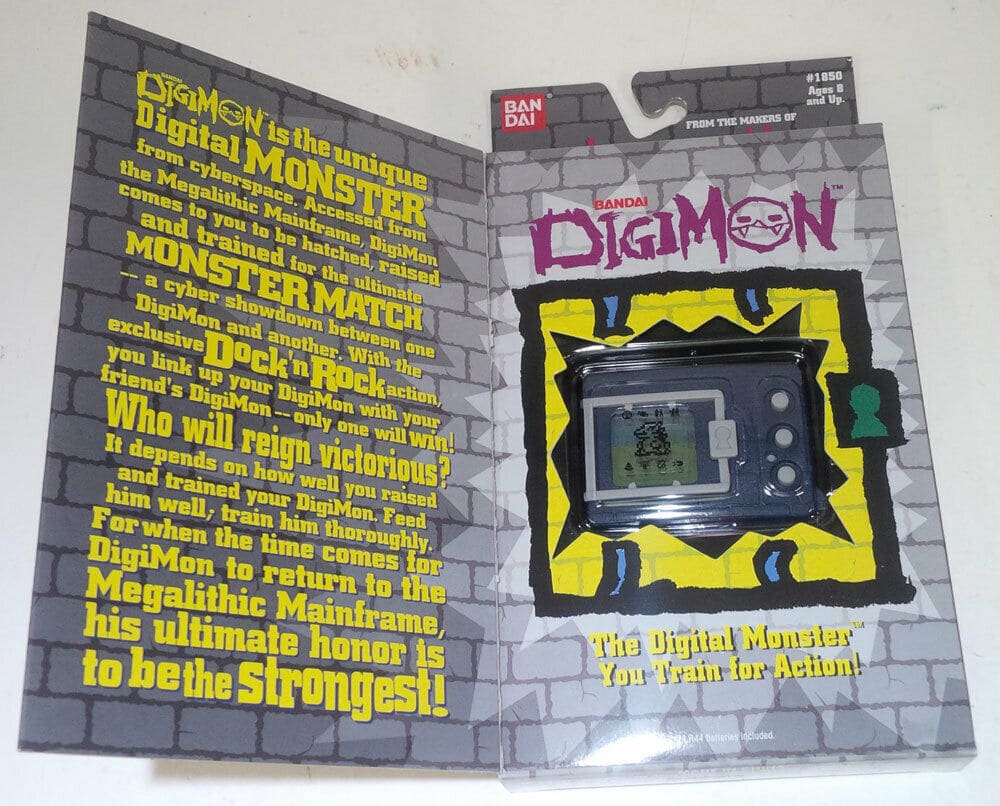
As Tamagotchi ruled the market in the late 90s, Bandai decided to repurpose the idea with boys in mind. So, they reworked the digital pets to create creatures that could connect and fight with each other. Even though these new versions of pets still started in a baby form, they evolved into powerful combatants. Thus, one of the greatest contenders to Pokémon was born, Digimon.
Like Tamagotchis, Digimon still had basic needs, like hunger and energy. However, these stats affected their ability to battle, for a Digimon with no energy could not link up to fight at all. While they could eat an unlimited number of vitamins, which increased their strength and energy. However, feeding them meat would decrease their hunger while increasing their weight. They could even shadowbox to help them lose weight. Unfortunately, owners of these Digimon also had to deal with droppings, which caused illness when left unattended.
Beyond the connection to the immensely popular Tamagotchis, Digimon rocketed to popularity thanks to the anime, Digimon Adventure, which debuted in 1999. Unlike the Pokémon cartoon series, Digimon focused on a group of seven campers who became the DigiDestined. Each of these children bonded with their paired Digimon, saving both the digital and real worlds. Later, an eighth child joined the DigiDestined after they returned to their homes in the real world. This series also spawned a theatrical movie in 2000.
Tiger Electronics’ Furby (1998)
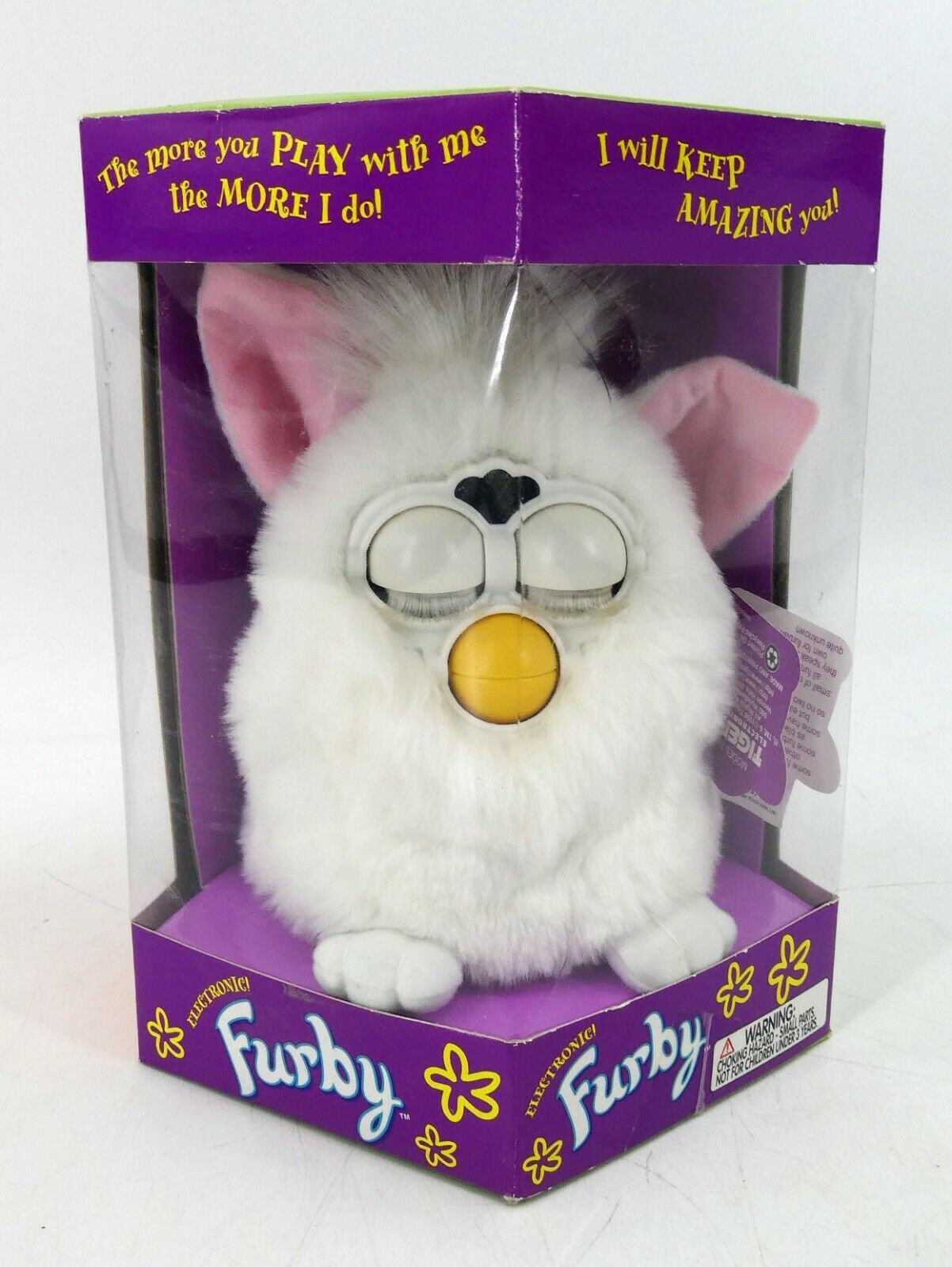
Anyone who lived in the late 90s knows the fear and terror that came along with the Furby craze in 1998. Tiger Electronics dominated the market during the 90s thanks to their ever-present LCD handheld games. Unlike the complex games that companies created for the Gameboy and Game Gear, Tiger used tried and tested techniques that created LCD watch displays and games. So, their games only had a limited selection of monochromatic sprites along with simplistic beeps and boops. Still, these handhelds launched the company into a massive success.
By the late 90s, though, these handheld games had lost their luster. So, Tiger Electronics sought out a new product to keep their profits high. So, they happily agreed to help David Hampton, Caleb Chung, and Richard C. Levy bring their robotic toy to the market. Inspired by the popularity of Tamagotchis, these inventors aimed to create a robot pet that could actually receive pets. The owl-like creature that they produced caught the fancy of Tiger Electronics. So, the company was more than happy to bring the interactive toy to store shelves.
When Furbies hit the market in 1998, they became a nearly instantaneous hit. Parents fought over these small furballs as they hoped to please their children on Christmas day. Up to that time, no company had successfully created a robotic toy that actively talked back to the users. While Furbies used a unique gibberish language, they still responded and mimicked their owners. The IR sensor in their head also helped them react to movement.
ToyMax’s Creepy Crawlers (1992)
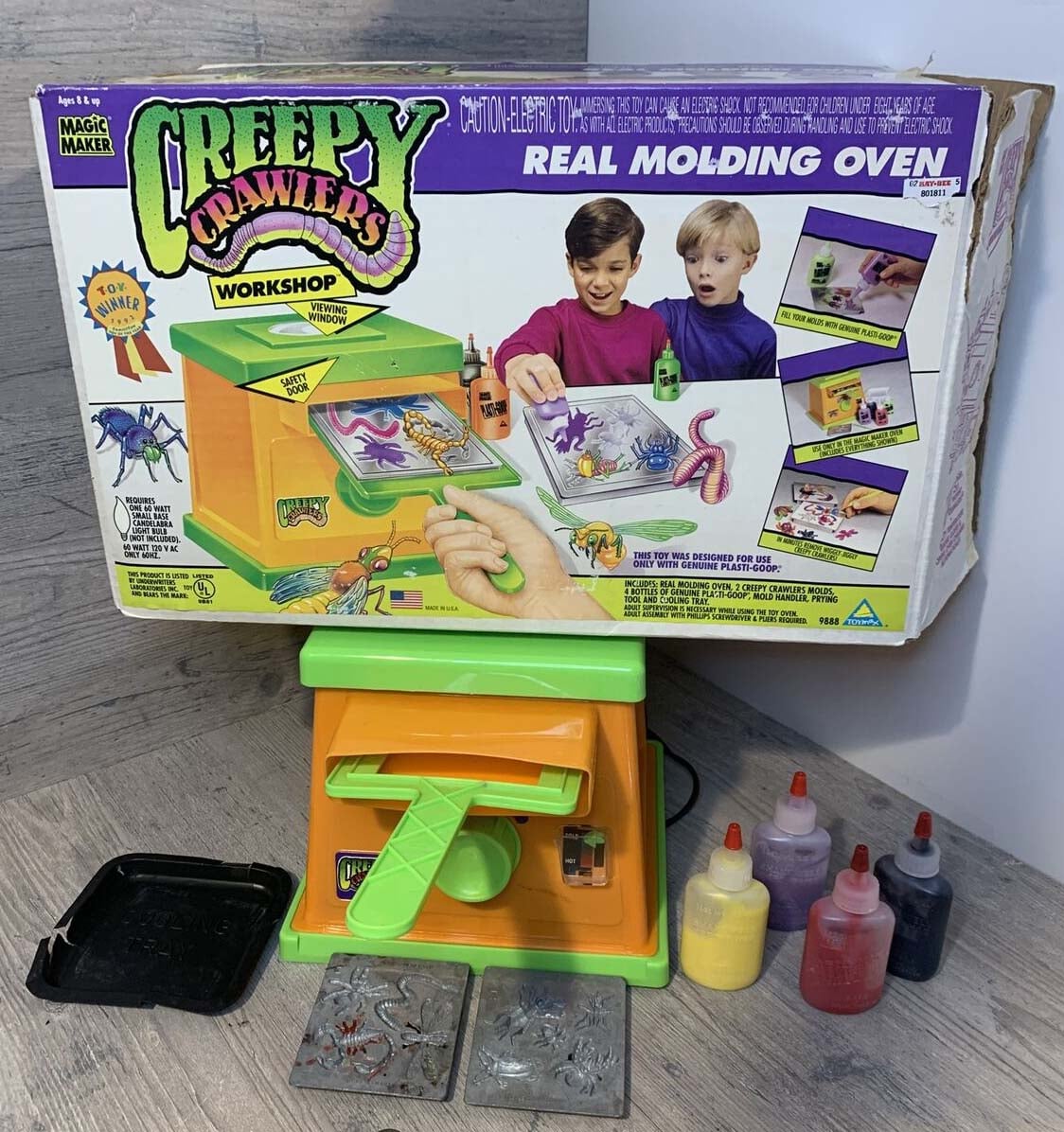
While Creepy Crawlers had exited in years gone by, safety concerns mired the legacy of the original products. The first versions of these toys were originally known as Thingmakers, appearing as early as 1965. To create goopy toys, they featured an oven that heated the plates to 390 °F. The same heat that allowed these toys to create simple plastic toys also led to the downfall of this product in the 70s. For, the new safety protocols from the Consumer Product Safety Commission forced the discontinuation of toys that involved extreme heat. While the toy briefly returned in 1978, Mattel’s version of Creepy Crawlers never made a full comeback.
After years passed, another company decided to give the oven-baked toys a new lease on life. Toy Max rethought the concept of the oven, deciding to replace the heat source with a lightbulb-powered heater. They also introduced a heat-triggered door to keep any hot plates in the oven until they sufficiently cooled. With the safety protocols addressed, they were ready to introduce the Creepy Crawlers to the mass market.
With a catchy theme song swarming over television ads, Creepy Crawlers quickly rose in popularity after their release in 1992. Moreover, the older generation that grew up with the Thingmakers of old longed to share the fun of their childhoods with their children. Moreover, the selection of slimy bugs and crawling creatures led to children tormenting their more squeamish siblings. This newfound popularity also led to ToyMax including molds from hit television shows, like the Power Rangers.
Playmates’ Teenage Mutant Ninja Turtles – Technodrome (1990)

For years, Teenage Mutant Ninja Turtles dominated the toy aisles and television sets. This group of four mutants loved pizza as much as they loved protecting New York City. As they appealed to the youth of the late 80s and early 90s, their toy sales seemed nigh unstoppable. However, there was one prominent set piece from the cartoon that was missing from the toy aisles, the Technodrome.
This monstrous machine served as the main base for Shredder, Krang, and most of the foot. Originally, it moved deep beneath the surface, drilling new tunnels to remain evasive. While the Turtles tracked down the Technodrome multiple times, they never brought it to a standstill. Eventually, they sabotaged the Technodrome’s systems, especially its dimensional gateway, so badly that the machine was pulled into Dimension X. The Technodrome remained a mainstay of the series for several seasons, moving from Dimension X to the core of the Earth and even the bottom of the sea.
This all changed in 1990 when Playmates finally created the ultimate playset for any Teenage Mutant Ninja Turtle Fan. This gigantic playset opened to reveal two interior levels where the Turtles could battle against the Foot. The interior even featured a jail cell where the Foot could hold prisoners. A giant mechanical eyeball sat on the top of this machine, remaining faithful to the cartoon design. Without a doubt, this was the ultimate Christmas gift for any Teenage Mutant Ninja Turtles fan in the 90s.
Tyco Preschool’s Sesame Street – Tickle Me Emo (1996)
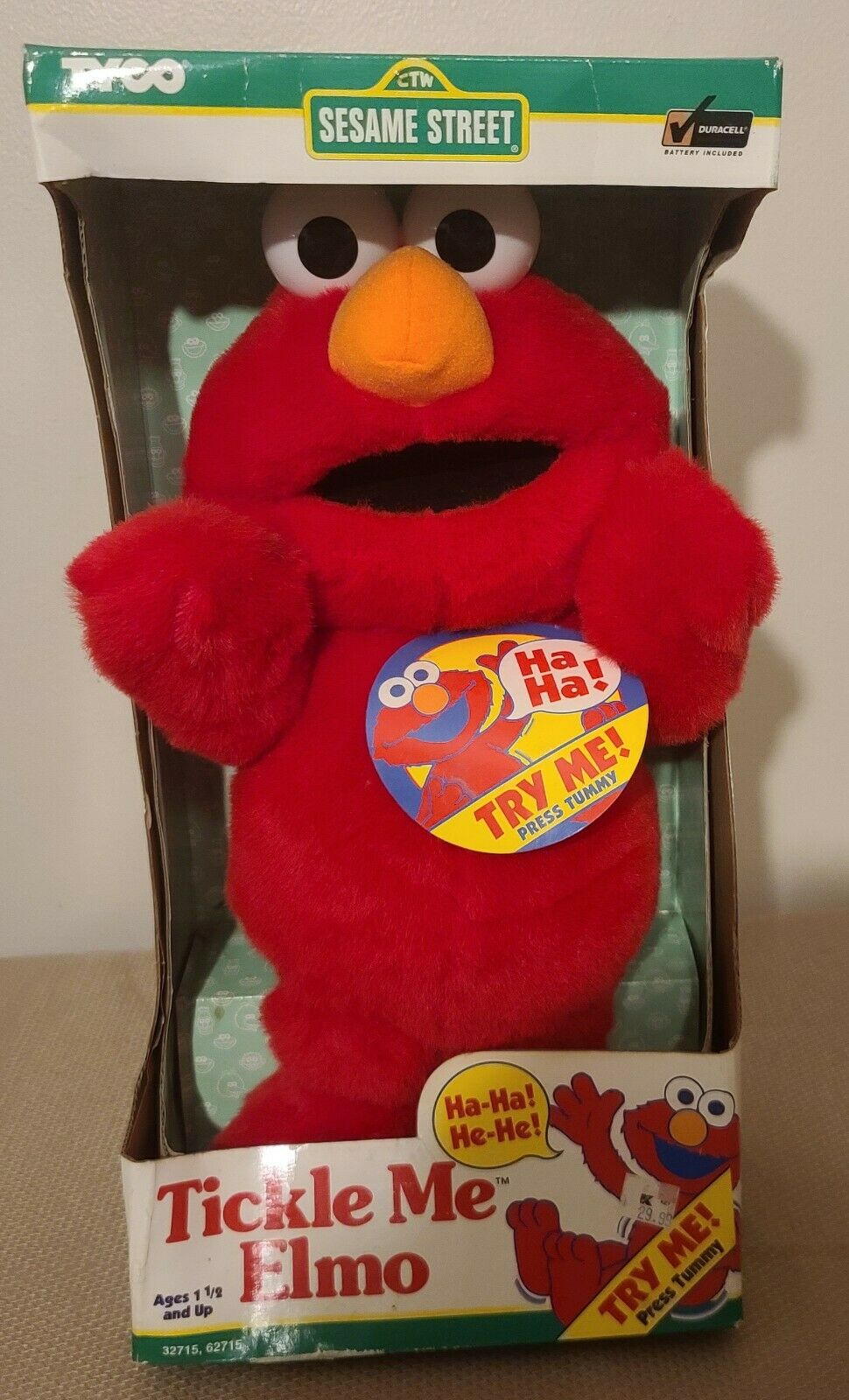
Since it began airing in 1969, Sesame Street had sparked the imaginations of children across the United States. For decades, its colorful cast of puppets, designed by the great Jim Henson, educated the masses. While the star of the show was Big Bird, the other cast members also shared in the spotlight. However, one particular character began to rise above the others thanks to his cheerful disposition after his introduction in the 80s.
In 1985, a minor side character, Elmo, moved into the hands of Kevin Clash, who gave the puppet the energy to become a star. Since his character was set as a self-described three-year-old, he easily became relatable to the show’s target audience. By the late 90s, Elmo was a bona fide star, appearing on shows like the Rosie O’Donnell Show. So, it was only a matter of time before he became a hit toy.
The Tickle Me toys began years before as a Tickle Me Chimp that Greg Hyman and Ron Dubren designed. Tyco initially loved the idea, converting the toy that responded to tickling into a Tasmanian Devil toy. As Tyco lost the rights to the Looney Tunes, they fatefully picked up the rights to Sesame Street. Thus, the phenomenon of Tickle Me Elmo was born in 1996.
Even though Tickle Me Elmo sat on store shelves until November, the toys suddenly became scarce as parents rushed to buy Christmas gifts. In part, the crazed fad started as Rosie O’Donnell featured the toy in an October episode of her talk show. This toy’s scarcity prompted a frenzy amongst shoppers, leading to fights and arrests over Elmo. In the end, around a million Elmos made it to become gifts under Christmas trees.
Tiger Electronics’ Talkboy (1992)
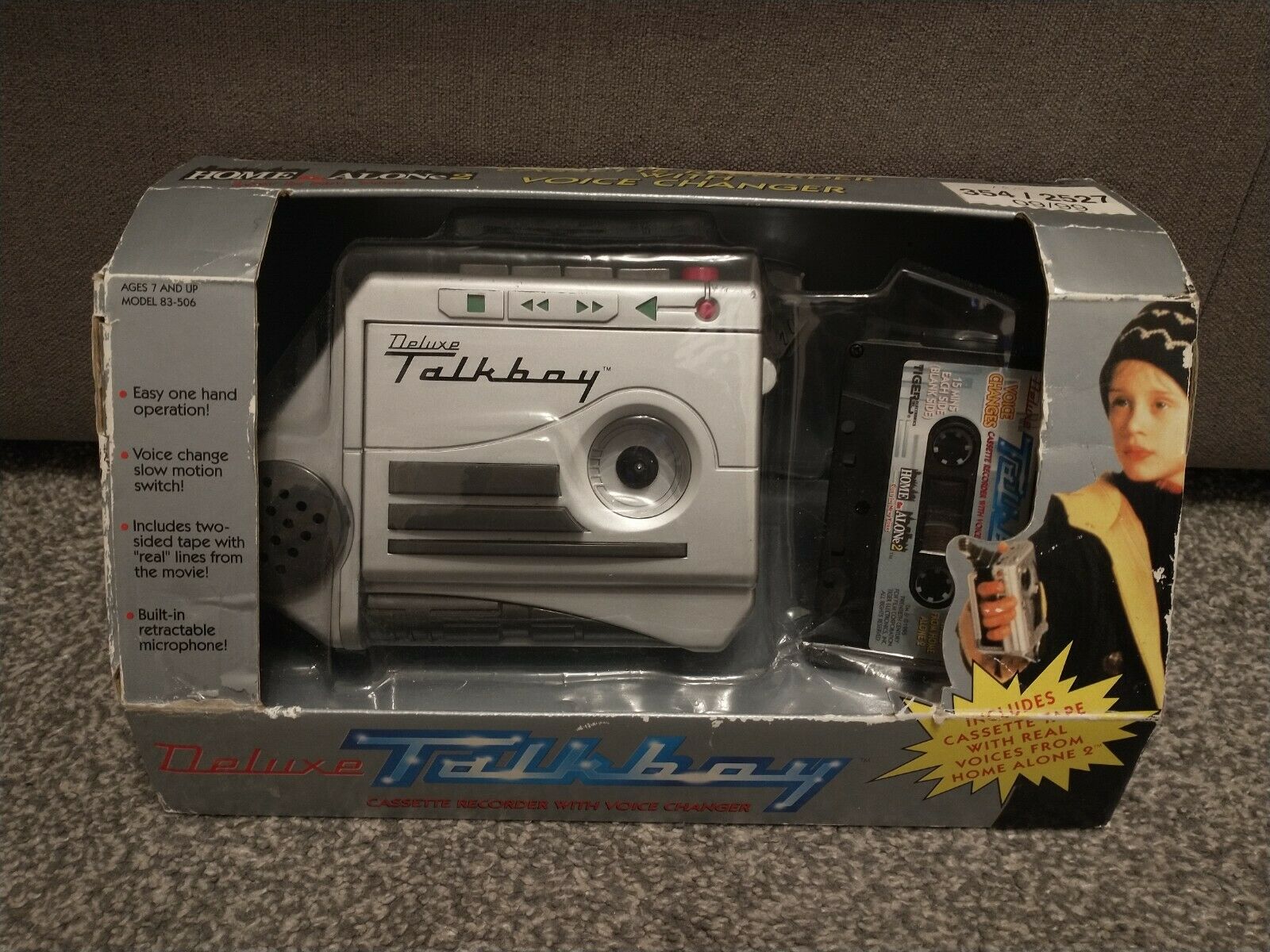
As Tiger Electronics helped design a specialized prop for 1992’s Home Alone 2: Lost in New York, they felt the design was too good to remain a prop. So, Tiger convinced the production crew that they should create a retail version of this electronic. So, they quickly moved to release the Talkboy to store shelves in 1992. However, it did not become one of the most sought-after Christmas gifts until the 1993 holiday season. Even years later, it remained at the top of Christmas lists, remaining a best-seller during the 90s.
In the movie, Kevin McCallister used the Talkboy’s variable speed functions to modify his voice clips, fooling the staff at the Plaza Hotel. He even used this device to record incriminating statements from the former Wet Bandits, Harry and Marv. Thus, the Talkboy appeared to be a cutting-edge device that felt realistic.
When Tiger Electronics fleshed out the design of their prop, creating the retail toy, they had to initially drop some features, like the variable speed changer. Since this model failed to capture the hearts of consumers, they went back to the drawing board. By 1993, the Talkboy returned with a deluxe model, which included the voice-changing feature.
Further bolstering the popularity of the Talkboy, this device appeared on a cross-promotion with Life cereal. Unfortunately, since the original version of the Talkboy had mediocre sales, retailers were not prepared for the massive hit that the Deluxe version became. As the Talkboy sold out across the nation, it became one of the most sought-after toys of the year.
Thinkway Toys’ Toy Story – Ultimate Talking Buzz Lightyear (1995)

Despite the massive company that Disney has become as of late, they struggled to find partners for their projects in the 90s. This was even more true when they shopped for a company willing to take up the Toy Story license. Pixar presented the design for their toys to companies like Mattel, Hasbro, and even Disney Consumer Products, but none of them wanted to produce the merchandise. Eventually, after attending a New York Toy Fair, they found the perfect partner in a small company, Thinkway Toys. Despite only having about ten months to produce the toys, Thinkway managed to launch their Toy Story toy line with the first Woody and Buzz Lightyear toys in December 1995.
As Toy Story was the first fully 3D animated film along with Pixar’s first attempt at a feature film, none knew how audiences would react. Thanks to the charm of the film and the marketing power from Disney, the film quickly became a hit. As children enjoyed the antics of the toys on screen, they longed to bring the toys home to play with them.
So, Thinkways’ agreement to quickly produce the first set of Toy Story toys led to a massive hit. The first wave of their Buzz Lightyear toys featured a yellow stripe across the front of the box. As commented on in the second film, Thinkway failed to meet demand with their first wave of toys. So, they quickly produced a second wave which had a blue stripe instead.
Staying faithful to the design in the film, Buzz featured several voice clips from Tim Allen. His buttons also activated features like his instant wing release and laser sounds.
Bandai’s Power Rangers – Megazord Deluxe Set (1993)
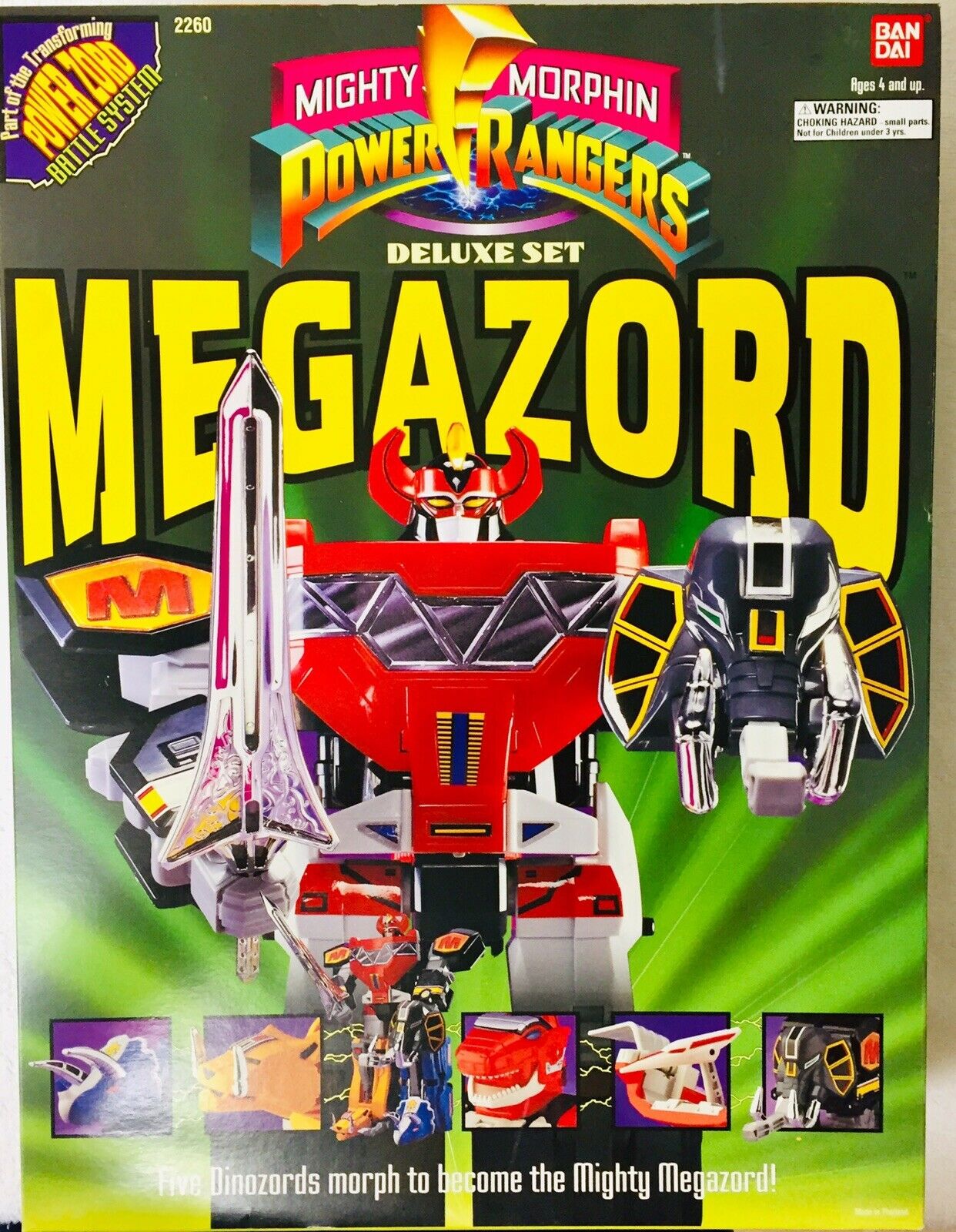
In the early 90s, few Americans had even heard of, let alone thought about, the Super Sentai series from Japan. While there had been a brief attempt to localize the series in the 70s when Toei Company and Marvel Comics exchanged ideas. While Toei created a television series that has garnered renewed popularity in recent years, the Japanese Spider-Man series, Marvel failed to find a distributor for Sun Vulcan. So, the Super Sentai remained unknown to the average American.
This all changed in 1993 when Haim Saban realized his dream of presenting Super Sentai to American Audiences. As he adapted the series for Americans, he spliced together with new footage, starring high schoolers from a Californian town, with the action scenes from Super Sentai. Thus, the Mighty Morphin’ Power Rangers was born.
As Bandai had a working relationship with Toei in Japan, they had created toys and props for the show for years. Thus, they quickly moved to rebrand their Super Sentai toys into Power Rangers merchandise in America. Foremost amongst the first series of Power Rangers toys was the Deluxe Megazord Set, which included all five Dinozords.
Within the set were the Tyrannosaurus, Mastodon, Triceratops, Saber-Toothed Tiger, and Pterodactyl Dinozords. Each of these robots had a transformation sequence, which allowed them to combine into the most memorable part of the show, the Megazord. This set also included the Megazord’s Power Sword.
Galoob’s Sky Dancers (1994)
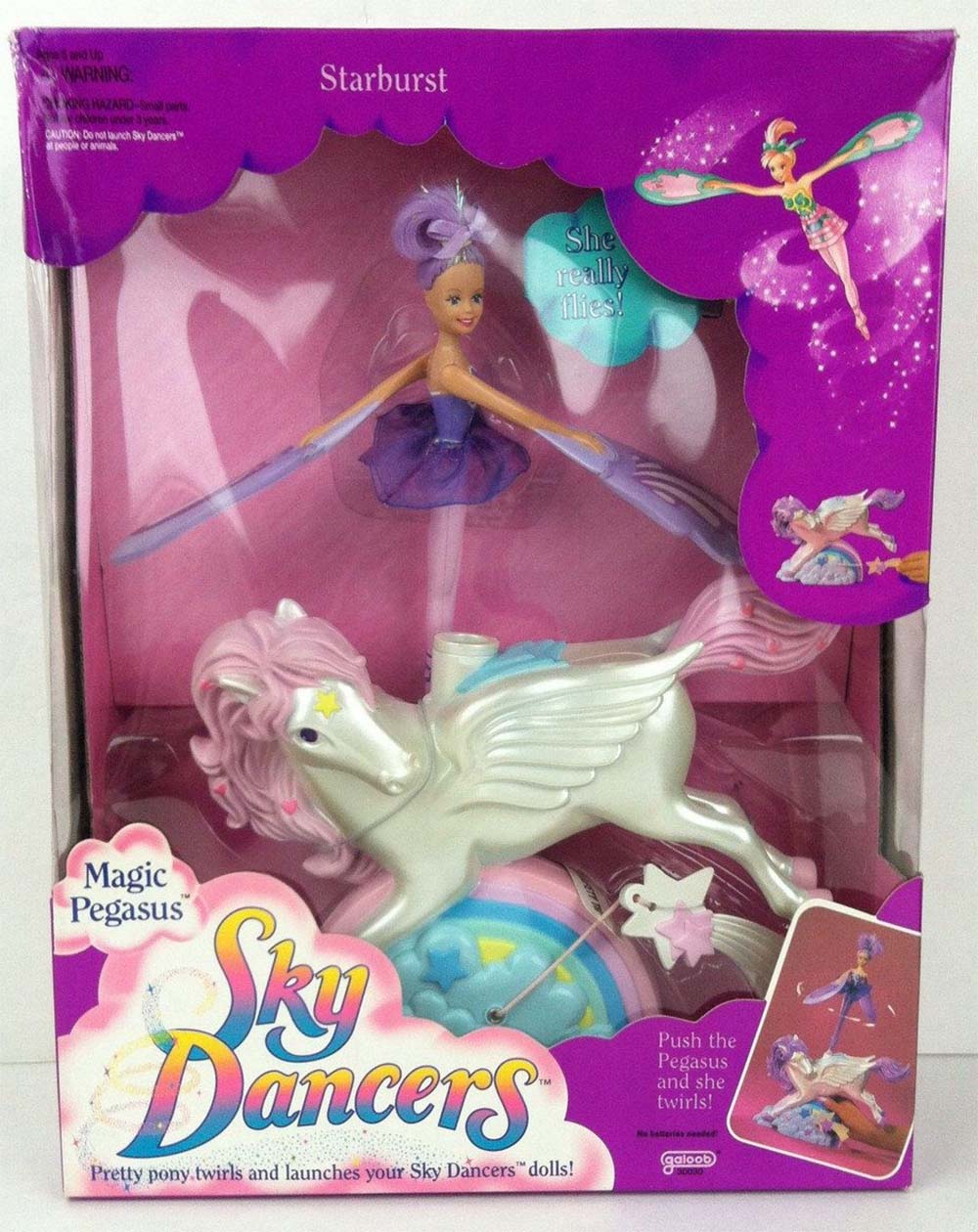
While safety protocols for toys in the 90s were much stringent than decades past, companies still produced toys that later produced massive controversy. Such was the case of the massively popular Sky Dancers from 1994. When they first arrived, none imagined that these colorful toys could cause devastating damage.
Galoob introduced the Sky Dancers in 1994, presenting dolls with foam wings that would fly through the sky like a helicopter. A pull-string-powered mechanism gave these toys torque as they launched into the sky. They were then supposed to gently drift down to the ground below. Unfortunately, the toys proved to be dangerously unpredictable, especially around ceiling fans.
In many cases, the toys did not gently drift down to the ground. Instead, they quickly plummeted back to the children who launched them into the sky. So, this toy gained a reputation for scratching corneas, causing concussions, and breaking teeth. Over the years, Galoob received 170 reports of injuries thanks to this toy. Thus, they finally recalled millions of Sky Dancers after years on the market in 2000.
Despite the danger the Sky Dancers posed, they were a massive success. The sales of these toys led to an animated series in 1996. Still, many who grew up with them remember their dangerous reputation over any animated series.
Mattel’s Micro Hot Wheels’ Nightmare Alley (1995)
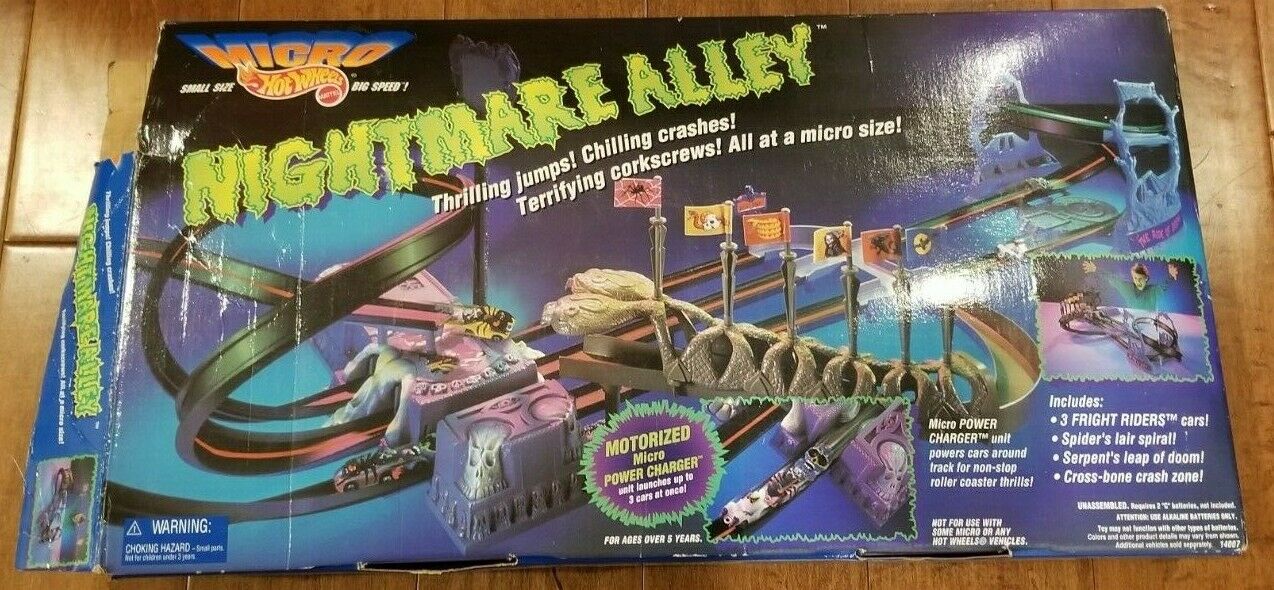
Even though Hot Wheels began in 1968, their popularity remained strong even through the 90s. No matter the decade, Mattel continued to license and produce toy vehicles that reflected the most popular vehicles. They also produced cars that reflected the cars that prominently appeared on television series and movies, like the Batmobile. However, a collection of cars would just sit there without a race or stunt track.
Luckily, Hot Wheels produced multiple track sets to increase the popularity of their vehicles. As other companies had begun to also produce toy cars, like LJN’s Rough Riders, Hot Wheels had to keep the innovations going on their playsets. As they reduced the size of their cars, creating the Micro Hot Wheels, they created complex stunt sets for these cars.
https://www.youtube.com/embed/GxPZtH1ViQ4?feature=oembed
Amongst these stunt sets was the Nightmare Alley, which featured three fright riders, which glowed in the dark. The set had several ramps and jumps that these cars raced through. Beyond the leaps, the set featured a series of loops, dubbed the Spider’s Lair Spiral. There was even a complex series of intersections, the Cross-bone crash zone, offering the chance for spectacular crashes on the course.
This was only one of many spectacular stunts sets that Hot Wheels produced during the 90s. No matter which set children found under their Christmas trees, they loved their present.
Which toys do you remember longing for the most in the 90s?
We have shared ten memorable toys that children longed to see under their Christmas trees in the 90s. However, there were still many more popular toys from that decade. Which toys did you hope to see under your tree? What were your favorite Christmas presents? Let us know in the comments below.
Do you have old and used toys?
If you have a collection of old and used toys, you can turn those toys into cash. There is no reason to let those old toys collect dust. Contact us today to sell your 90s toy collection.
About the Author
Chris Ingledue is the founder and owner of Wheeljack’s Lab pop Culture and Toy Shop. His vision has always been to reunite customers with their favorite childhood toys and pop culture, triggering fond memories, and reigniting their imaginations. Every day he works in the “lab” where it’s Christmas 365 days a year; scouring the internet – like we did the Sears Catalog of yesteryear – for the next great treasure, awaiting the arrival of the postman as if he was Santa Claus himself and helping collectors worldwide with their own versions of Christmas. For Chris, every day as a vintage toy buyer is an absolute joy!